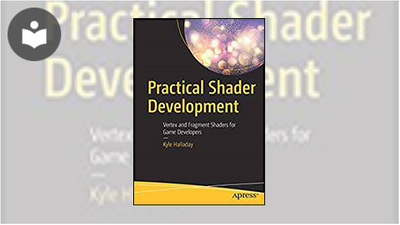Practical Shader Development: Vertex and Fragment Shaders for Game Developers
- 6h 3m
- Kyle Halladay
- Apress
- 2019
It’s time to stop thinking that shaders are magical. You can use shaders to turn data into stunning visual effects, and get your hands dirty by building your own shader with this step-by-step introduction to shader development for game and graphics developers. Learn how to make shaders that move, tint, light up, and look awesome, all without cracking open a math textbook.
Practical Shader Development teaches the theory behind how shaders work. The book also shows you how to apply that theory to create eye-popping visual effects. You’ll learn to profile and optimize those effects to make sure your projects keep running quickly with all their new visuals. You’ll learn good theory, good practices, and without getting bogged down in the math.
Author Kyle Halladay explains the fundamentals of shader development through simple examples and hands-on experiments. He teaches you how to find performance issues in shaders you are using and then how to fix them. Kyle explains (and contrasts) how to use the knowledge learned from this book in three of the most popular game engines today.
What You'll Learn:
- Understand what shaders are and how they work
- Get up to speed on the nuts and bolts of writing vertex and fragment shaders,
- Utilize color blending and know how blend equations work
- Know the coordinate spaces used when rendering real-time computer graphics
- Use simple math to animate characters, simulate lights, and create a wide variety of visual effects
- Find and fix performance problems in shaders
- See how three popular game engines (Unity, UE4, Godot) handle shaders
About the Author
Kyle Halladay is a professional game programmer living in Chicago. He has more than seven years of experience writing about shaders and building graphics technology for games and architectural visualizations.
In this Book
-
Hello, Game Graphics
-
Your First Shaders
-
Using Textures
-
Translucency and Depth
-
Making Things Move
-
Cameras and Coordinates
-
Your First 3D Project
-
Diffuse Lighting
-
Your First Lighting Model
-
Normal Mapping
-
Cubemaps and Skyboxes
-
Lighting in Depth
-
Profiling Shaders
-
Optimizing Shaders
-
Precision
-
Writing Shaders in Unity
-
Writing Shaders in UE4
-
Writing Shaders in Godot



